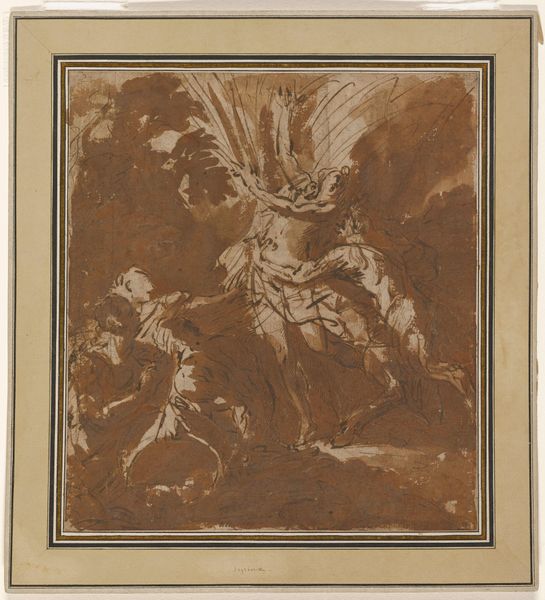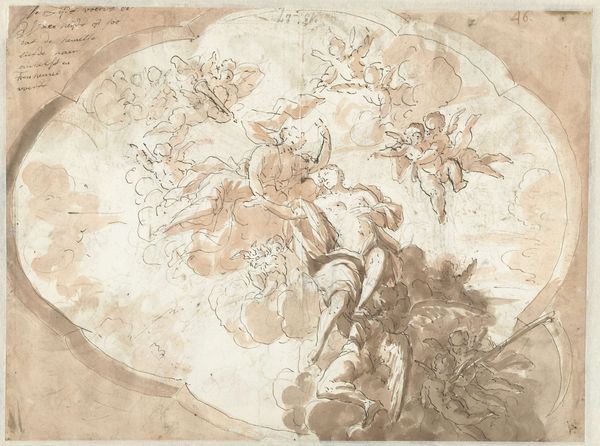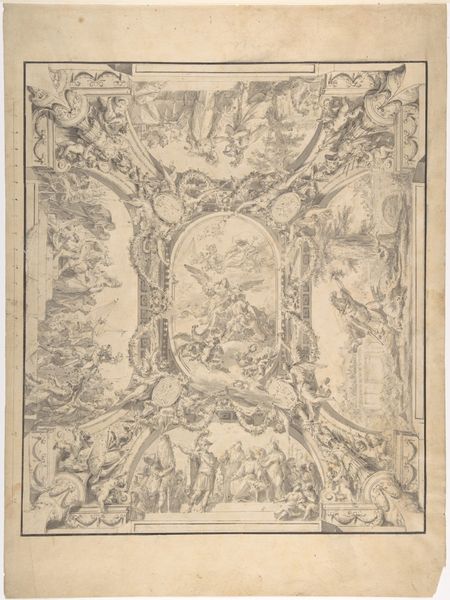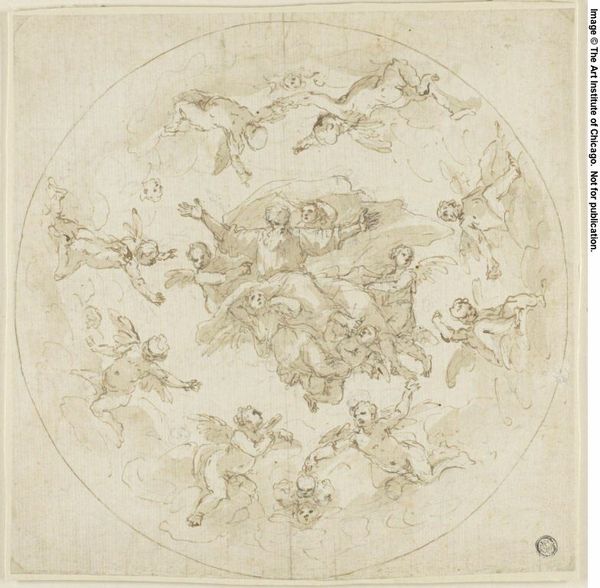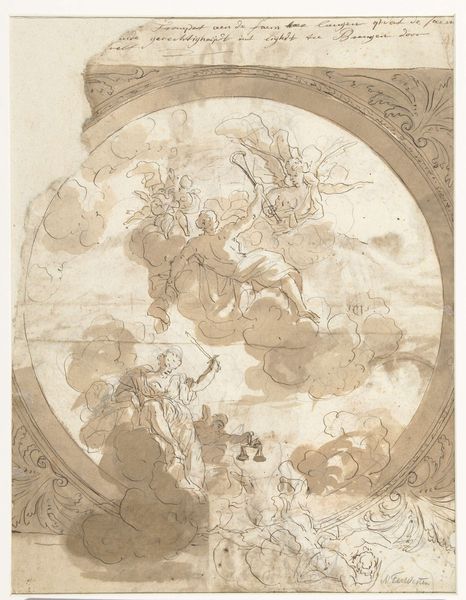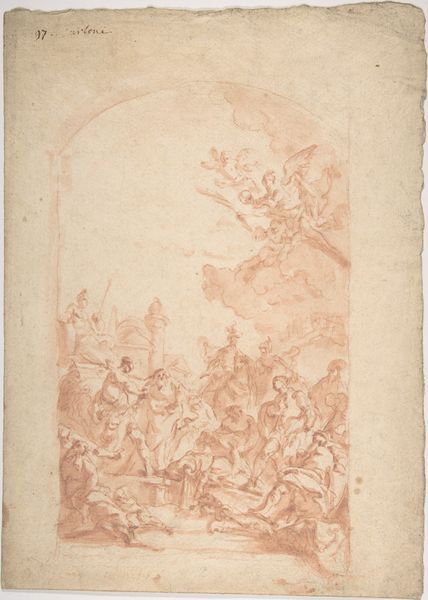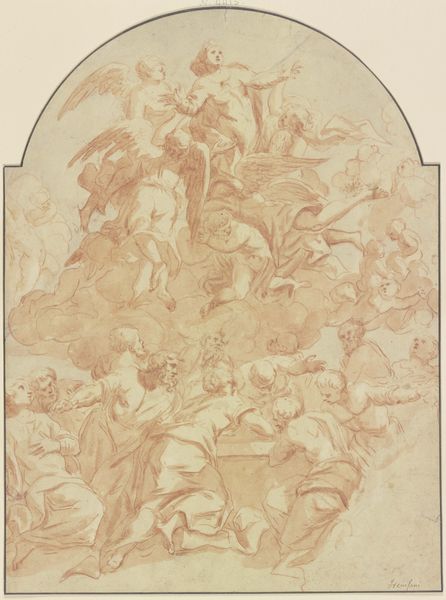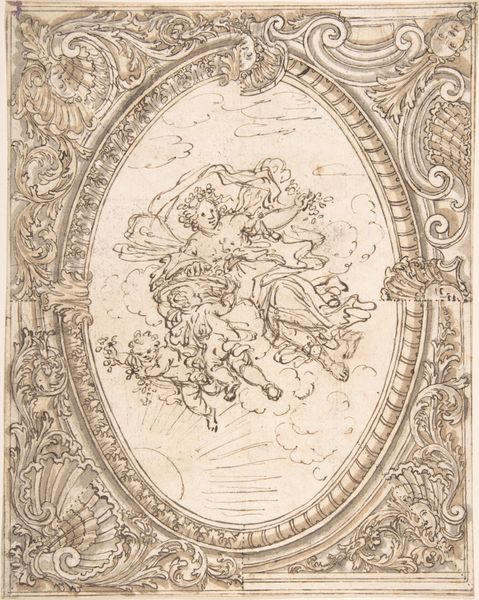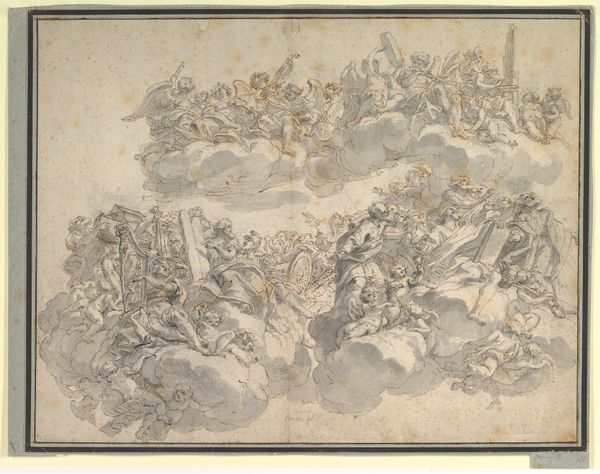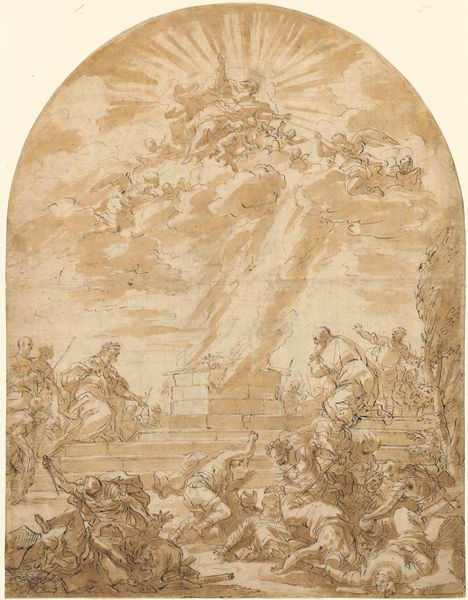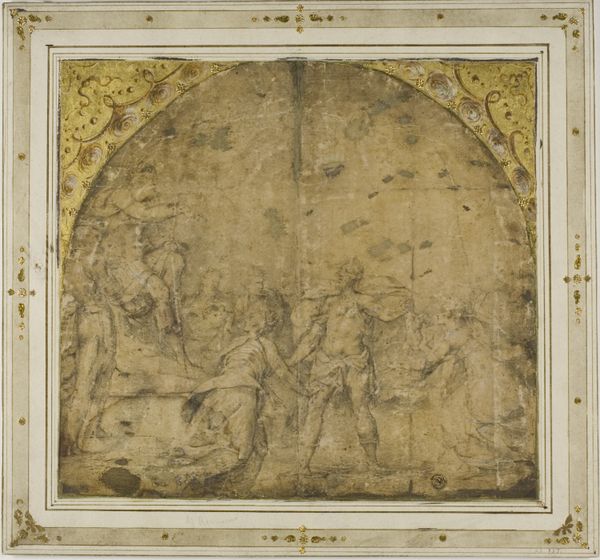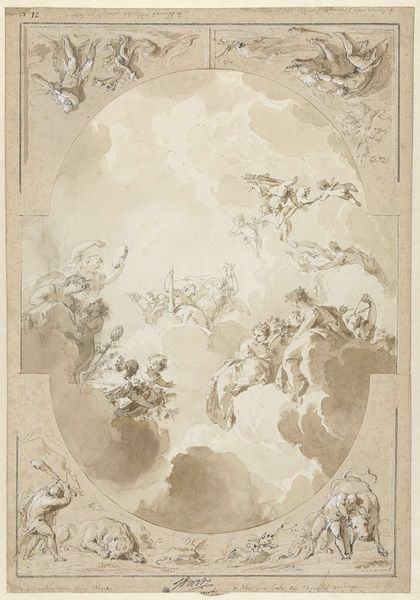
drawing, painting, print, gouache, paper, ink, graphite, pen
#
drawing
#
allegory
#
baroque
#
painting
# print
#
gouache
#
paper
#
ink
#
graphite
#
pen
#
history-painting
#
watercolor
Dimensions: 900 × 690 mm
Copyright: Public Domain
Curator: The work before us is Lorenzo de' Ferrari's "Olympus," created around 1743-1744. It's a gouache drawing, a detailed work on paper that offers a glimpse into Baroque allegorical art. What strikes you first about this piece? Editor: An immediate sense of dynamism, frankly. All these figures tumbling through space – it feels like an explosion of mythology caught mid-air. It has a very theatrical feel. Curator: Absolutely, Baroque art often aimed for such dramatic effects. This piece reflects the period's patronage, specifically, how wealthy families used art to signal their erudition, often displaying scenes from classical mythology to align themselves with its rich legacy. It's less about personal spirituality and more about social positioning. Editor: I'm intrigued by the concentration of bodies, aren't you? See how he groups these divine figures, creating this layered tableau. To me, it resonates with the symbolic idea of heavenly hierarchies, the all-seeing eye of the Gods, watching everything below. Even that chariot being pulled by cupids— the message seems clear. Curator: A brilliant point! That is not unlike how these powerful families would want to portray themselves. And yes, the symbolic loading is quite strategic. It's Baroque allegory; its very point is to impress and communicate power through the learned vocabulary of classical imagery, referencing well-known stories. The arrangement also reinforces the existing power structures of the time. Editor: So it isn’t necessarily about personal creative liberty but social demands. Still, observe those soft tonal gradations, a visual echo across ages. The use of that sepia tone is striking – sepia feels ancient. It creates this amazing connection with the symbolic meaning, even now, doesn't it? Curator: Indeed. In its own time, it may have seemed radically grandiose, or part of some powerful family’s self-promotion but today that same approach makes it stand out, almost unexpectedly subtle, as a social artifact, despite its symbolic exuberance. Editor: Yes! I feel it makes me question: are these symbols of the past that are alive today, or are they forever frozen in their meaning. The ambiguity lingers and creates a long shadow after seeing the artwork.
Comments
No comments
Be the first to comment and join the conversation on the ultimate creative platform.
